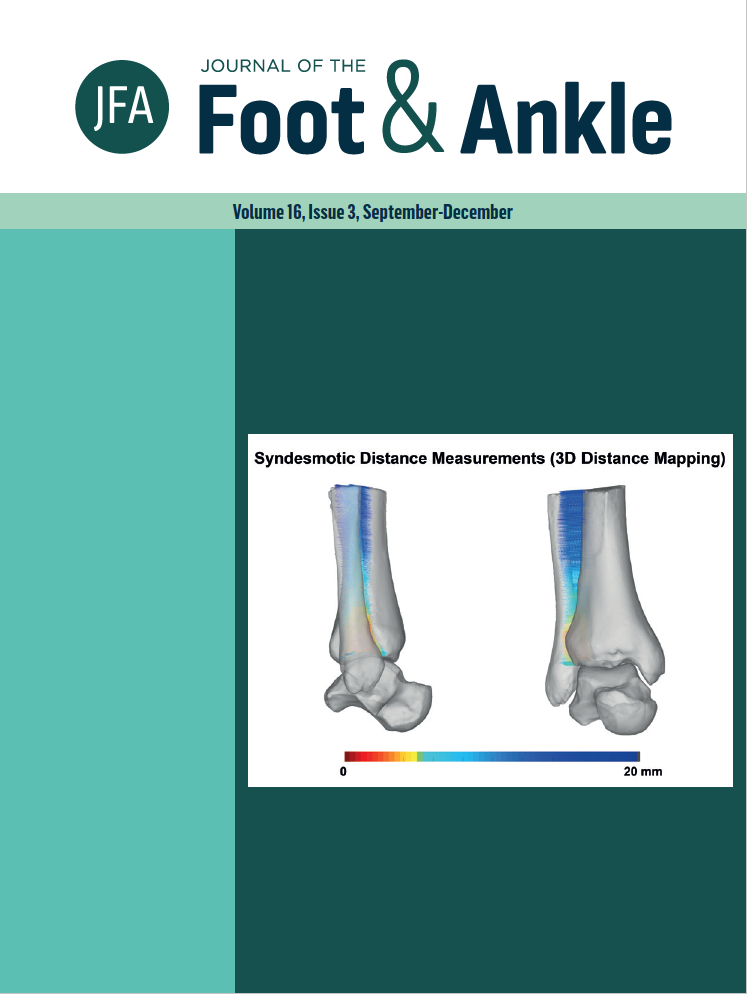Hindfoot arthroscopy management of flexor hallucis longus tenosynovitis: 24-month outcomes
DOI:
https://doi.org/10.30795/jfootankle.2022.v16.1638Keywords:
Arthroscopy/methods, Tenosynovitis, Treatment outcomeAbstract
Objective: We present a series of patients with flexor hallucis longus tenosynovitis submitted to hindfoot endoscopy, describing clinical outcomes and reporting surgical findings and complications seen throughout the treatment. Methods: Thirty-one patients diagnosed with flexor hallucis longus tenosynovitis submitted to posterior ankle endoscopy were followed. The mean follow-up was 24 months. Patients were classified according to American Orthopaedic Foot and Ankle Society (AOFAS) and Visual Analogue Scale (VAS) scores. Patient satisfaction was measured. Results: The mean age of patients was 35.13 (Å} 10.68) years. The VAS score improved from 7.16 preoperatively to 2.16 in postoperative follow-up. The AOFAS score improved from 76.39 (Å} 5.06) preoperatively to 97.10 (Å} 3.78) in postoperative follow-up. Patients were able to return to sports activities at the same level as before surgery by a mean of 4.6 (Å} 1.27) months. One of our patients developed a complication of wound erythema in a portal, which resolved without additional treatment. Conclusion: The diagnosis of flexor hallucis longus tenosynovitis is commonly associated with a large Stieda process or os trigonum impingement, limiting participation in sports activities. In our series, the endoscopic procedure showed good results in treating this condition, promoting a swift return to sports activities. Patients further presented a good postoperative recovery with few complications. Level of Evidence IV; Therapeutics Studies; Cases Series.
Downloads
Published
How to Cite
Issue
Section
License
Copyright (c) 2022 Journal of the Foot & Ankle

This work is licensed under a Creative Commons Attribution-NonCommercial 4.0 International License.







